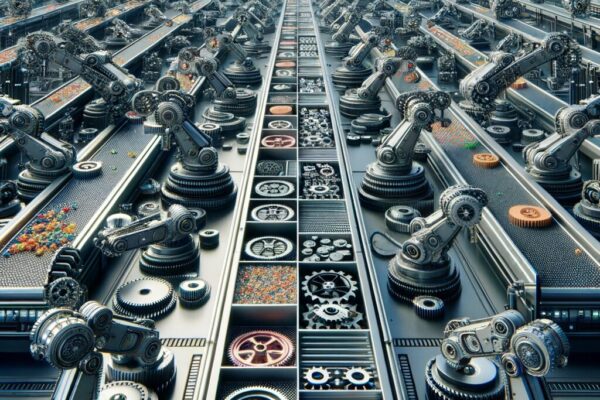
Harnessing AI-Powered Predictive Maintenance to Slash Downtime and Cut Costs
There’s a familiar, gut-wrenching sound that echoes through manufacturing facilities around the world: the sudden stop of a crucial machine mid-production. For operations managers, maintenance supervisors, and plant engineers, this abrupt silence signals not just a technical failure but an impending domino effect of lost productivity, mounting repair costs, and operational chaos. Unexpected equipment breakdowns are no small nuisance—they can cripple entire production lines, erode tight delivery schedules, and inflate budgets beyond control.
Yet, most maintenance strategies remain stuck in reactive or time-based routines, leaving manufacturers caught in a costly limbo of “fix it when it breaks” or “service it on schedule, regardless of wear.” This approach, while familiar, is draining resources and increasing vulnerability to failures that paralyze operations.
But what if you could foresee these breakdowns well before they occur? Imagine a system that listens to each machine’s subtle whispers—temperature fluctuations, vibrations, pressure shifts—and deciphers these signals to predict deterioration. This is no science fiction; it is the power of AI-driven predictive maintenance.
Why Reactive and Scheduled Maintenance No Longer Cut It
Traditional maintenance paradigms have long been the backbone of manufacturing upkeep: repair machines after failure or perform routine maintenance at regular intervals. However, the limitations of these methods become painfully clear when:
- Equipment fails unexpectedly between scheduled maintenance, prompting expensive emergency repairs.
- Routine maintenance is performed unnecessarily on components that are still in good condition, wasting labor and parts.
- Downtime stretches longer as workers scramble to diagnose issues without prior warning.
- The overall lifespan of machinery is shortened due to unmonitored wear and tear.
The financial and operational toll of these shortcomings has driven the search for more intelligent, data-driven alternatives.
The Promise of AI-Powered Predictive Maintenance
Predictive maintenance harnesses the explosion of data generated by connected equipment alongside artificial intelligence’s ability to find patterns invisible to the human eye. By continuously monitoring asset health and leveraging machine learning models, this approach can anticipate failures and recommend timely interventions.
How does it bring relief to the nightmare of unscheduled downtime?
- Advanced Warning: AI models trained on historical data flag potential faults days or weeks in advance, allowing maintenance teams to plan fixes during scheduled windows.
- Optimized Resources: Instead of wasting manpower on unnecessary checks, efforts focus precisely where and when intervention is needed.
- Extended Asset Life: Early detection of anomalies prevents minor issues from escalating into catastrophic failures.
- Data-Driven Insights: Beyond simple alerts, manufacturers gain a richer understanding of machine behavior, enabling continuous improvement.
The key to unlocking these benefits is a well-orchestrated implementation pathway.
Laying the Foundation: Installing IoT Sensors and Data Collection
The journey towards predictive maintenance begins with transforming your machines into digital informants. This means equipping them with an array of sensors—measuring vibration, temperature, acoustic signals, pressure, current consumption, and more. These sensors form the sensory nervous system, relentlessly collecting a flood of real-time data points.
Starting can feel overwhelming:
- Which parameters are most relevant to your critical assets?
- How will the data be transmitted, stored, and secured?
- What infrastructure is needed to handle the volume and velocity of inputs?
Working closely with experts who understand both operational realities and emerging technologies ensures the sensor setup captures meaningful data without disrupting production.
Training the AI: From Raw Data to Predictive Models
Collecting data is only the first step. Raw sensor streams must be transformed into actionable intelligence. That’s where machine learning shines. By feeding historical maintenance records, sensor signals, and failure logs into AI models, algorithms learn to spot subtle patterns that precede breakdowns.
Several approaches exist:
- Supervised Learning: Models train on labeled data where past failures are identified, learning signatures that predict similar future faults.
- Unsupervised Learning: AI identifies deviations from normal operating patterns that may indicate emerging problems, even without prior failure data.
The process requires constant iteration and validation to ensure predictions are accurate and timely, avoiding false alarms or missed failures.
Selecting the Right Analytics Platform
Not all AI solutions are created equal. Choosing a robust analytics platform means considering:
- Compatibility with your existing machinery and IT systems.
- Ease of integrating with maintenance management software.
- Real-time processing capabilities.
- Customizable dashboards and alert systems.
- Vendor support and scalability.
A user-friendly interface that maintenance teams can quickly adapt to is just as important as the algorithm’s sophistication.
Integration and Alert Thresholds
Predictive insights must seamlessly flow into maintenance workflows. Integration means syncing AI output with maintenance management systems so alerts trigger work orders, assign technicians, and even procure necessary parts automatically.
Setting alert thresholds is a balancing act:
- Too sensitive, and the system overwhelms teams with false positives.
- Too lax, and early warnings slip through unnoticed.
Continuous tuning of these parameters based on ongoing feedback turns predictive maintenance into a strategic asset rather than a disruption.
Measuring Returns: Downtime Reduction, Cost Savings, and Productivity
The proof of any new technology is its bottom-line impact. Successful AI-powered predictive maintenance programs yield:
- Reduced Downtime: Planned repairs replace stoppages, keeping lines running smoothly.
- Lower Maintenance Costs: Labor hours focus on necessity, with fewer rush orders for emergency replacements.
- Improved Equipment Availability: Machines function longer with fewer unplanned interruptions.
- Greater Operational Transparency: Insights into component wear enable strategic capital planning.
Tracking these metrics builds a compelling case for broader adoption and continuous refinement.
Overcoming Implementation Challenges
Manufacturers often hesitate to adopt AI solutions fearing complexity, cost, or disruption to existing routines. Common hurdles include:
- Skepticism about AI’s accuracy or applicability.
- Difficulties in sensor installation on legacy machinery.
- Resistance from maintenance staff unfamiliar with new tools.
Addressing these through education, pilot projects, and choosing experienced partners mitigates risk and accelerates success.
The Way Forward with Expert Guidance
Transitioning to AI-powered predictive maintenance doesn’t have to be a solitary, trial-and-error voyage. MyMobileLyfe specializes in helping manufacturing operations harness AI, automation, and data-driven strategies to transform maintenance from a costly headache into a competitive advantage.
With expertise in deploying IoT sensors, crafting tailored machine learning models, integrating analytics platforms, and streamlining workflows, MyMobileLyfe empowers companies to unlock the full potential of predictive maintenance. The result is more uptime, greater productivity, and significant savings that directly impact the bottom line.
If unexpected equipment failures and escalating repair costs have weighed down your facility, the right predictive maintenance solution is within reach. Instead of battling downtime, embrace foresight—and let technology work for you. Visit MyMobileLyfe AI Services today to start reshaping your maintenance strategy and securing the future of your operations.









































































































































































Recent Comments